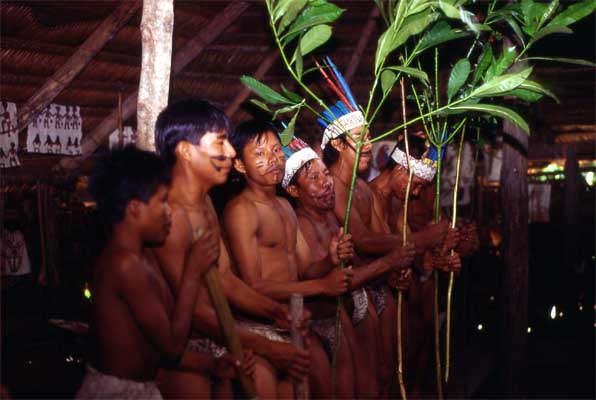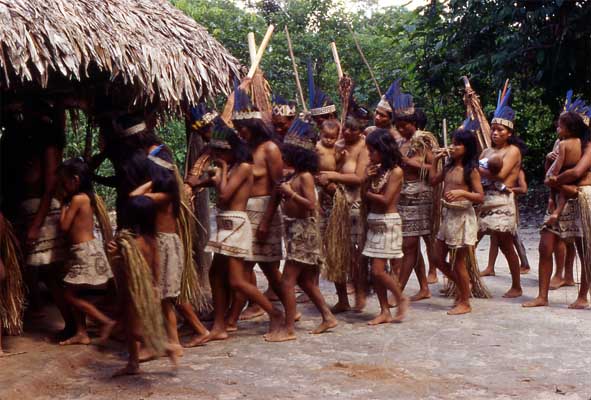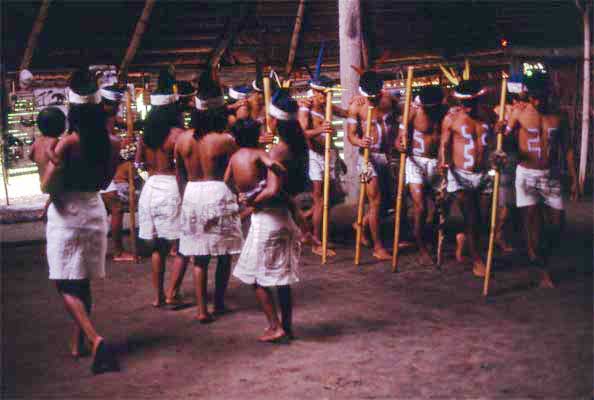TRADITIONAL DANCERS
Purists decry the entertainment provided for tourists by local tribes in the form of traditional dances. Some people regard this practice as demeaning, somehow contaminating the native tradition. However, for the people performing the dance, it provides a valuable source of income. Tour companies pay the dancers directly for the performance. Afterward, the dance troupe and their families have a chance to sell handicrafts, adding to the economic benefit. It is likely that without these incentives, these traditions would die out altogether. The modern world is encroaching on these people and, undoubtedly, loggers, miners and traders are not going to pay them to perform their traditional dances. |
Click below to see the photos and information on the Bora dancers:
anaconda dance
villagers participate
inside the hut
ANACONDA DANCE
return to gallery
The Bora today live peacefully alongside the Yagua Indians, although the two tribes were once implacable enemies. The "Anaconda Dance" involves the men stomping on a long, flattened log that thumps the ground with a resounding beat. The head-dresses are made from the tail feathers of the blue and yellow macaw inserted in a band of bark cloth. Note that the women are carrying their babies. |
ALL THE VILLAGERS PARTICIPATE
return to gallery
In this village, even the youngest children are encouraged to join in the fun—thus, the tradition is maintained down the generations. The villagers enjoy dressing in ceremonial garb for the dance, but dress in western clothes after the occasion. The head-dresses are made from the long blue tail feathers of the blue and yellow macaw. The skirts are made from the tree bark of a fig tree (Ficus yoponensis), beaten very thin. (See bark cloth for details.) |
INSIDE THE HUT
return to gallery
It's quite dark, and cool, inside the hut. These are built on the traditional style, and at one time, the entire village would sleep together in these communal buildings. Today they are used primarily for group events, such as performing for visitors. |
Learn more about the Bora dancers
previous section
|
next photo
|
|---|





